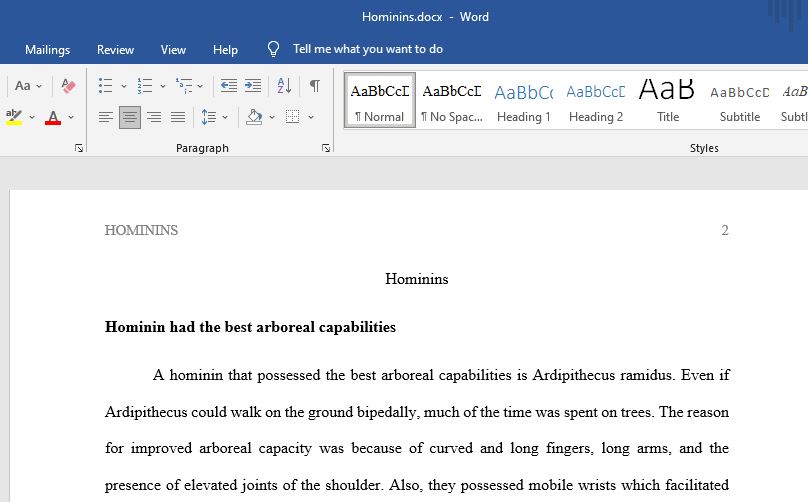Hominins: From Hanging in Trees to Walking on Two Legs
Beginning in the late Miocene and into the early Pliocene, upright walking tendencies began to develop among the hominin tribe. Upright walking tendencies slowly transformed into obligate bipedalism during the pliocene within the hominin lineage. This shift in locomotor strategy is notably marked by the gradual change in arm to leg ratio that we see when comparing early and later hominins. Early hominins have short legs and very long arms while later hominins have longer legs and short arms.
Your task for this activity will be to compare and contrast the locomotor strategies of the following two hominin species: Ardipithecus ramidus and Australopithecus afarensis. You will accomplish this by answering the following questions.
Before you begin make sure view all relevant reading material so that you can give me informed opinions. (1 page)
-
- Which hominin had the best arboreal capabilities and why? The feature that you choose has to be from lower extremities (legs and feet). As part of your explanation you must use only one specific feature.
- Note: You will loose points if you give non-relevant information.
- Which hominins was the first to not just be an upright walker but an obligate biped (this means you have no choice but to walk on two legs)? Make sure you explain your answer using the same feature that you used when looking at the other hominin for comparative purposes.
- Lastly, I would like you to give a short summary of the notable transformations in bipedal abilities that occur over time as seen from Ardipithecus ramidus to Australopithecus afarensis.
- Which hominin had the best arboreal capabilities and why? The feature that you choose has to be from lower extremities (legs and feet). As part of your explanation you must use only one specific feature.
Answer preview:

word limit:324
